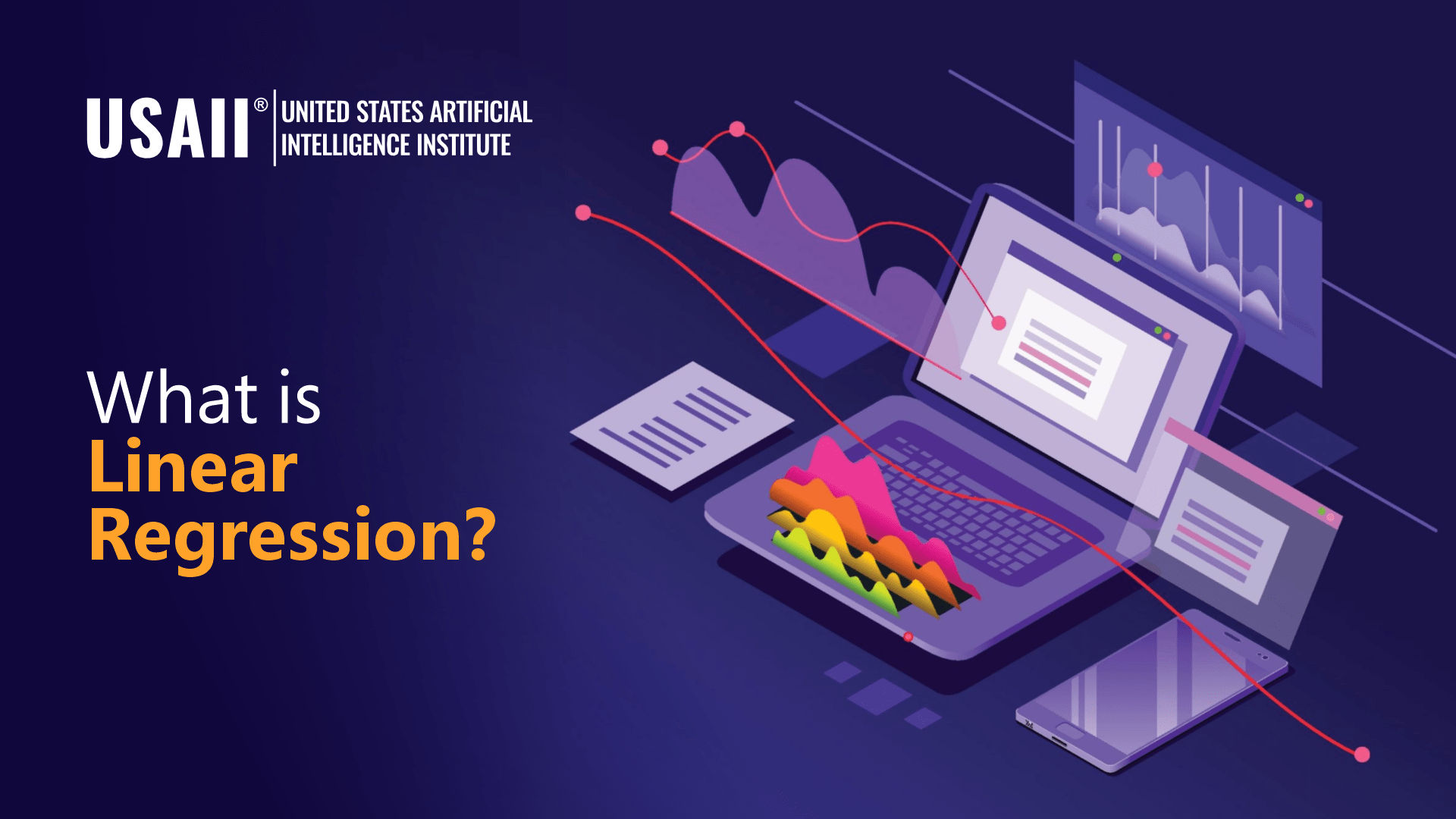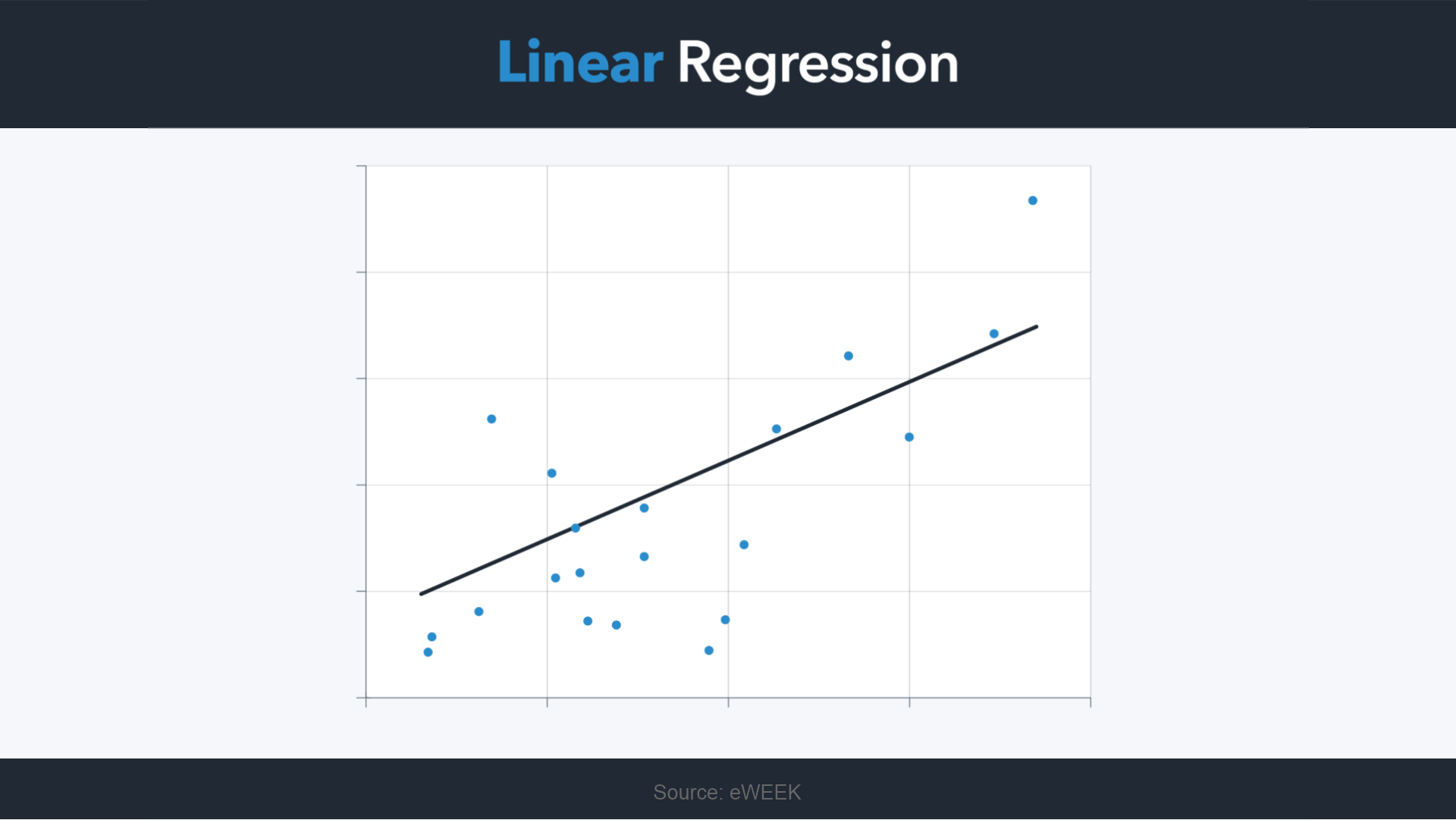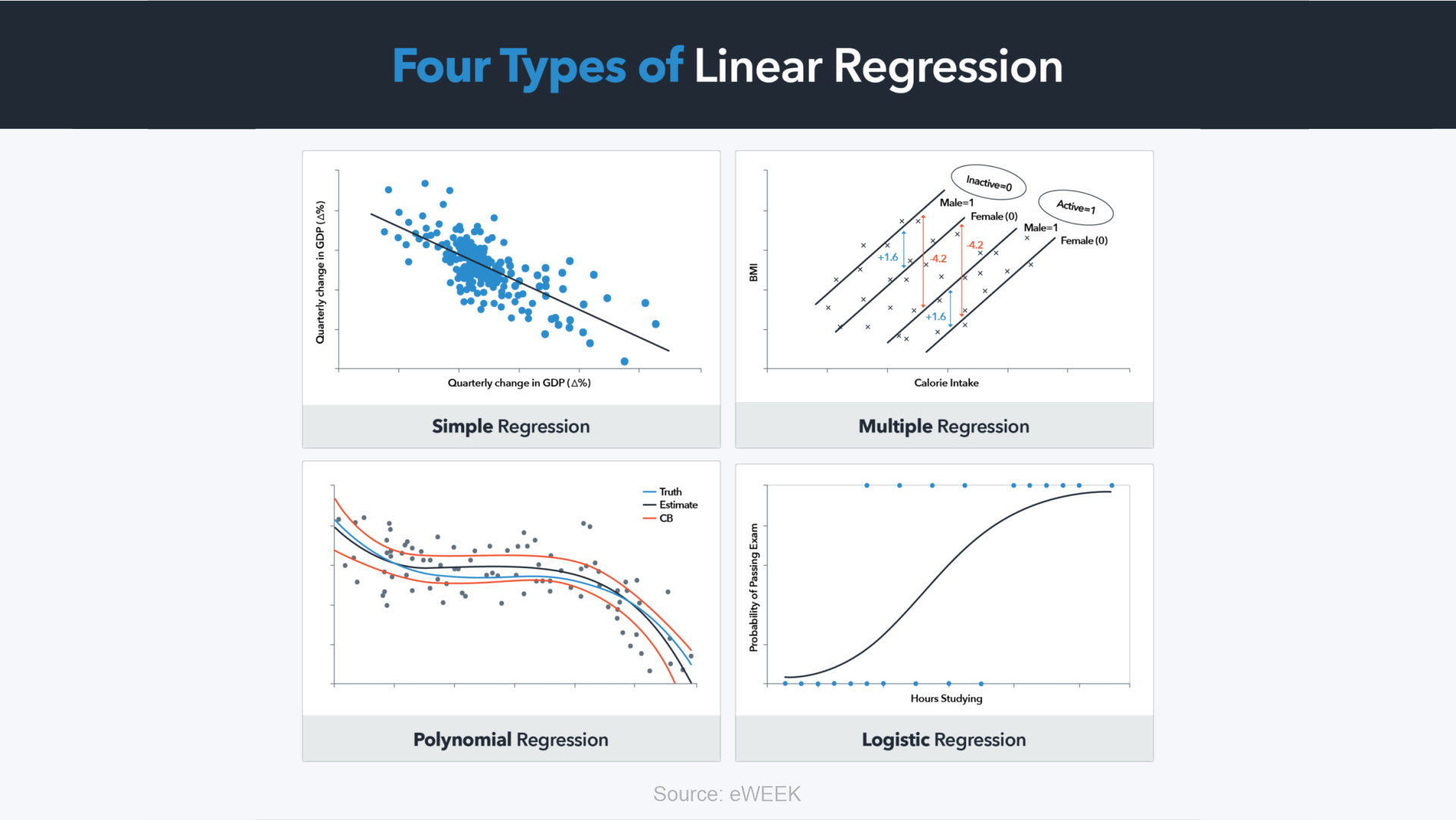
Linear regression is a fundamental statistical method used to model the relationship between a dependent variable and one or more independent variables. It helps the data scientists to understand the relationship between variables and predict how one variable will change with respect to another one.
It is a very useful machine learning algorithm that has applications across several industries where it is used to predict outcomes, understand trends, and make informed data-driven decisions.
Whether you want to enhance your AI career or want to boost your business productivity, understanding how this algorithm works, what are its types, and its benefits can be a great help.
What is Linear Regression?
At its core, linear regression is a common statistical technique that is aimed at finding the best-fitting line through a set of data points. This line is referred to as the regression line and represents the linear relationship between the variables.
An equation for simple linear regression models is:
y = mx + b
Where,
y: dependent variable or the outcome we want to predict
x: independent variable or the predictor
m: slope of the line i.e., how much y changes for a unit change in x
b: intercept or the value of y when x is 0

So, basically linear regression helps to predict outcomes depending on what information you currently have. The line is used as the measure of accuracy where the linear regression model will be more accurate when the data points are close to the line. This is referred to as the “least square” model. And when you find the “best fit” line, it will be most accurate for your predictions.
Types of Linear Regression
There are four main types of linear regression. AI professionals must understand the differences between them to select the best approach to solve their business problems. These are:
The most basic linear regression model involves one independent variable and one dependent variable. It works with a simple objective to find the best-fitting line and minimize the distance between the line and data points.
It includes two or more independent variables to predict a single dependent variable (using a straight regression line). This is mostly helpful for more complex models that are looking to capture intricate relationships between those variables.
It is used to convey the relationship between the independent and dependent variable as an nth-degree polynomial. This technique is thus more suitable to fit complex and non-linear relationships between variables.
Logistic regression is used to model the probability of an event occurring using a logistic function and uses binary classification such as predicting in the form of yes or no, spam or not spam, etc.

Purpose of Using Linear Regression
The linear regression algorithm is often used for these purposes:
The following section describes how organizations use it in their business applications.
Applications of Linear Regression
Linear regression can be used in almost all sectors. Here are some examples of how professionals use it to make predictions across industries:
To predict stock prices, forecast economic trends, assess financial risks, and more.
Helps analyze customer behavior, predict sales, enhance marketing campaigns
Used to model the progression of the disease, predict patient outcomes, and identify other risks
Helps predict the relationship between state spending and public support, professional pay and applicant qualification, carbon emissions and taxes, and more.
Used in areas like quality control, optimization of various business processes, failure analysis, and more.
Some important career paths that mostly use this linear regression are Sports analysts, Marketing analysts, financial analysts, environmentalists, etc.
Pros and Cons of Linear Regression
Using this machine learning algorithm presents a certain set of advantages and disadvantages to professionals.
Advantages:
Disadvantages:
Important Challenges or Assumptions of Linear Regression
Popular Linear Regression Tools
Though linear regression can be performed on paper as well, the process can be complex and cumbersome. Therefore, a variety of linear regression tools and software are available to ease the process of linear regression such as:
If you want to master linear regression and these linear regression tools and software, you can consider enrolling in USAII’s best AI certification programs that equip students and professionals with skills and knowledge along with practical exercises to master linear regression, as well as other machine learning algorithms in the simplest ways.
Conclusion
Linear regression is among the most important machine learning algorithms that have applications across different industries and for a variety of purposes. By now you must have understood what it is used for, and how it works. The aim of using linear regression is to minimize the distance between the line and the data points and find the best fit. However, AI professionals must ensure the relationship is linear and variables are free from and independent of errors, to get maximum out of it.
Follow us: